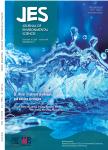Phosphate removal from domestic wastewater using thermally modified steel slag
Phosphate removal from domestic wastewater using thermally modified steel slag作者机构:College of Environmental Science and Engineering Beijing Forestry University National Center for Rural Water Supply Technical Guidance Chinese Center for Disease Control and Prevention Central Research Institute of Building and Construction Co. Ltd.MCC
出 版 物:《Journal of Environmental Sciences》 (环境科学学报(英文版))
年 卷 期:2015年第27卷第5期
页 面:81-88页
核心收录:
学科分类:083002[工学-环境工程] 0830[工学-环境科学与工程(可授工学、理学、农学学位)] 08[工学]
基 金:supported by the Mega-projects of Science Research for Water Environment Improvement of China (Nos. 2013ZX07209-001-003 2012ZX07307-001-006)
主 题:Steel slag Thermal modification Phosphate Adsorption Fractionation
摘 要:This study was performed to investigate the removal of phosphate from domestic wastewater using a modified steel slag as the adsorbent. The adsorption effects of alkalinity, salt, water,and thermal modification were investigated. The results showed that thermal activation at 800℃ for 1 hr was the optimum operation to improve the adsorption capacity. The adsorption process of the thermally modified slag was well described by the Elovich kinetic model and the Langmuir isotherm model. The maximum adsorption capacity calculated from the Langmuir model reached 13.62 mg/g. Scanning electron microscopy indicated that the surface of the modified slag was cracked and that the texture became loose after heating. The surface area and pore volume did not change after thermal modification. In the treatment of domestic wastewater, the modified slag bed(35.5 kg) removed phosphate effectively and operated for 158 days until the effluent P rose above the limit concentration of 0.5 mg/L. The phosphate fractionation method, which is often applied in soil research, was used to analyze the phosphate adsorption behavior in the slag bed. The analysis revealed that the total contents of various Ca-P forms accounted for 81.4%-91.1%, i.e., Ca10-P 50.6%-65.1%, Ca8-P 17.8%-25.0%,and Ca2-P 4.66%-9.20%. The forms of Al-P, Fe-P, and O-P accounted for only 8.9%-18.6%. The formation of Ca10-P precipitates was considered to be the main mechanism of phosphate removal in the thermally modified slag bed.



